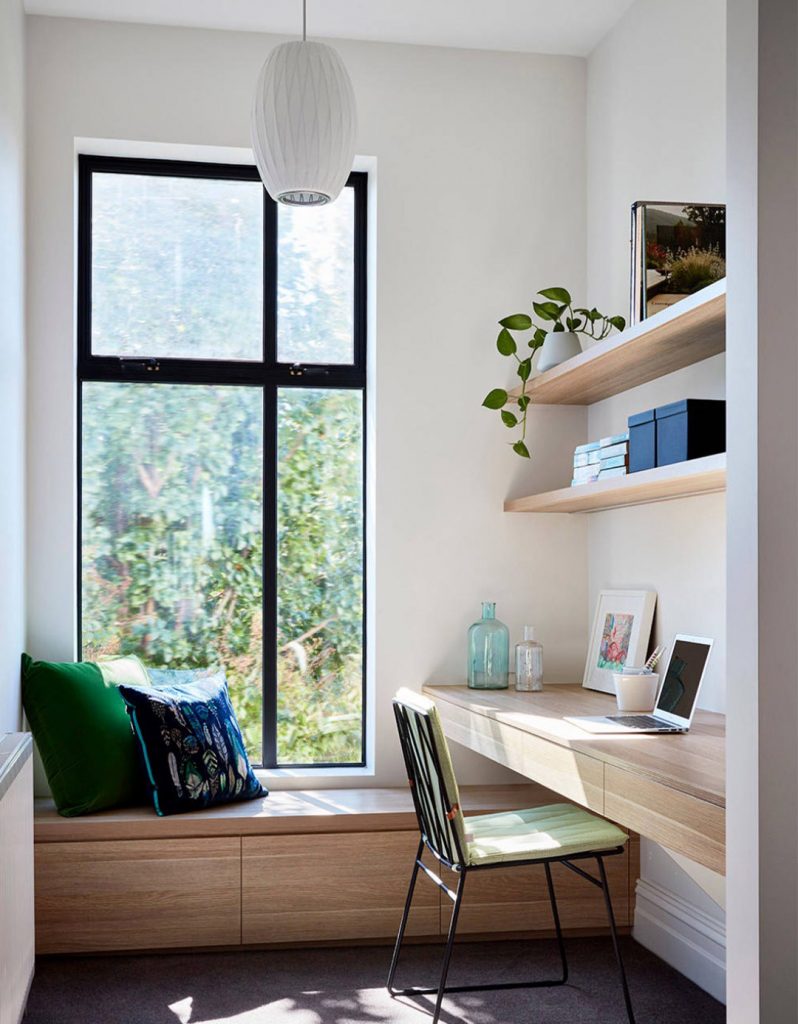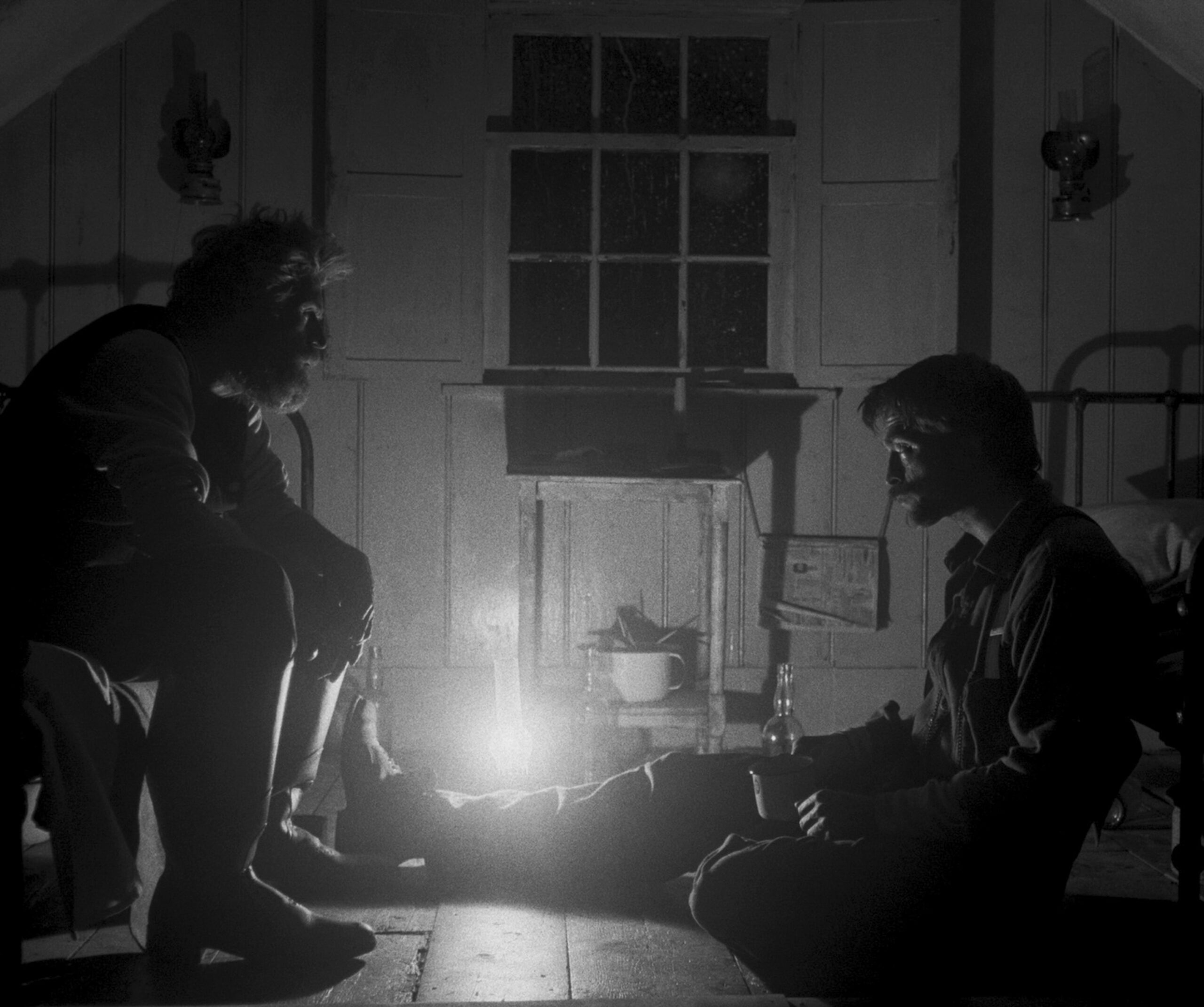Setting up optimal conditions to comfortably work from home is an increasingly common need in the professional life of many people, but what are the fundamental features to be respected for the lighting of a work space?
Let’s see what are the basics of a home office that can guarantee the right degree of productivity and limit the onset of health problems for those who have to spend many hours a day in front of a screen.
Lighting your environment
Bad lighting may result in health problems such as headaches, visual fatigue, muscle discomfort in the neck and back, but also in a worsening of mental health and productivity. For these same reasons, it is also important to study home office lighting.
The first feature that one’s light must have for their workstation is that it must be sufficient to perceive the keyboard and the information on paper in a clear and immediate way. The one coming from a ceiling light or a chandelier in the center of the room is likely not enough, especially if it is not completed by enough natural light coming from the windows.
For desk work activities, regulations recommend light to be between 500 and 750 lux, to be increased up to values between 750 and 1000 if you practice activities that require a high degree of precision (think for example of graphic works).
It’s also important to avoid strong contrast between the ambient light and that of the monitor: in general there must not be a significant difference between the brightness of the work area and that of the rest of the field of view, so that you do not force your eyes continuously readjust.
Light must also be diffused and fairly even all around, to avoid strong shadows, contrasts or annoying reflections. To achieve this result, light points should be distributed as much as possible around the environment and you should prefer lampshades that diffuse light rather than direct it. In the Bryant Alsop Architects’ office (photo 1), for example, they selected a suspension lamp from the Bubble Pendant by Nelson series by Hay, perfect to spread the light in multiple directions evenly. The soft and essential shape of the Cigar model also contrasts with the rigid lines of the environment, giving an example of how choosing an adequate lighting does not equal giving up on design.
It is also necessary to pay attention to the angle: if the table has a reflective surface, or if you work a lot with paper, it is good that the light does not come directly from above, otherwise it is likely to end up reflected in the eyes. To avoid reflections on the screen, on the other hand, it is necessary to ensure that the space of one’s field of vision is the one in which the light is most intense, leaving behind a slightly darker environment. That’s why the workstation of the room above is opposite to the window, so that natural light illuminates it while avoiding hitting the screen.

Natural light
Natural light is essential in any work environment, and it should be privileged over artificial light whenever it’s possible. For this reason, the desk should be placed near a source of natural light, which is much less tiring for the eyes than artificial light, and also has the benefit of keeping stress levels low.



In the Annie Portelli’s office (photo 2), the possibility of obtaining a lot of natural light from the windows is completed by the raw-effect wood furniture, which does not serve as a reflective surface and emphasizes the natural appearance of the environment. Also for the wall they kept the exposed bricks painted in a neutral white, whose ability to diffuse light is abated by the porosity of the texture of the materials.
Finally, being able to look out the window is important not only for mood, but also for the health of sight: in order not to tire the eyes, it is recommended to periodically vary the focus, focusing on objects “far” from the monitor.
Placing your desk
Setting up the right lighting for the work environment doesn’t only rely on rethinking light points, but also on moving the desk and place it correctly in accordance the light points already there.
Moving the desk right under the window to enjoy the natural light as much as possible is not enough, because not all positions are ideal. Light should arrive from the side, so that neither it reaches directly the screen making it less visible due to glaring, nor, on the contrary, gets directly into your eyes while the monitor casts a shadow on the work area. You should also choose the right side for you: light should come from the one opposite to the dominant hand, so that no annoying shadows get to be created when writing or when typing on the keyboard.
In the BBW House by Tecture (photo 5), for example, the choice of exploiting the small space between the window and the entrance door allows one to take advantage of the diffused natural light that illuminates the room evenly during the day. Coming from the side, and having the possibility of being screened by a curtain in the central hours of the day, it will not cause annoying reflections and glares. Natural light is then complemented by a desk lamp aligned to the same direction, to increase the level of light in the work area.

Table lighting
The light of a table lamp is an important element to integrate within the ambient light to get to the right amount of light, especially in the darkest hours. The ideal one directs light downwards and has a neutral tone, that is between 3000 and 4000K.
Above 4000K, lights become bluish, which is more stimulating but might also generate tiredness and headaches with prolonged use; on the contrary, those below 3000K have a reddish light, similar to the evening one, and do not therefore encourage productivity
«Setting up the right lighting for the work environment doesn’t only rely on rethinking light points, but also on moving the desk and place it correctly in accordance the light points already there»
You should prefer lamps with a flexible arm, in order to be able to adjust its angle and height to avoid glares; many lamps also allow you to vary the light intensity and color temperature. In any case, desk light should not be used alone, especially after sunset, but in combination with natural light and artificial ambient light, to soften shadows and contrasts. Concerning its placement, the same rules apply as for natural light: the light of the lamp should come from one side, and specifically from the opposite side of your dominant hand.
The design of the lamps you choose can also help make your work environment even more functional. Starting from the most famous models of the last century, such as the Anglepoise 1227 and the Tolomeo by Artemide, adaptable to illuminate precision works thanks to its almost infinite angling possibilities, its impeccable balance and ease of adjustment, all the way to the minimalist Z bars of Koncept that combine elegance with the efficiency of LEDs and tactile dimmers, to get to contemporary smart models with integrated external light variation sensors such as the Dyson CD06, there are no needs for a correct desk lamp to work from home that cannot be met.

Among most recent solutions, monitor lamps also deserve a mention, as they’re particularly suitable for those who have to work facing a screen but also with paper at the same time, in fact they do not take up space on the desk and do not limit the visibility of the screen to illuminate the work area. More advanced models, such as BenQ’s Halo, also offer advanced featuressuch as wireless control and automatic adjustment based on ambient light sensors. In this case, it is important to choose one that precisely adapts to the size and thickness of your screen, so that it does not cause glares.
Digital screens
The main source of visual fatigue when working on a computer is the prolonged time spent in front of the screens, themselves a source of illumination. Reducing the brightness level of the monitor might provide some relief in some cases, but it could also be annoying because it would also increase the ambient light reflected by it.
One possibility therefore is to lower the brightness on secondary screens, such as smartphones and tablets, as well as the use of special glasses for shielding blue lights. In addition, you can take advantage of those settings that adjust the color of the screen brightness based on the hour of the day, making it tend to red in the hours when there is no natural light and thus reducing the contrast between the screen and ambient lighting.







